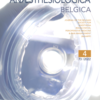Gender and graduating results in the Anesthesiology and Intensive Care Abomey-Calavi (Cotonou, Benin) program
Anesthesiology; Gender; Certification Exam; Africa (Sub-Saharan); Medical Education
Published online: Feb 21 2023
Abstract
Background: For unknown reasons female participation in anesthesiology is very low in Sub-Saharan Africa (SSA), especially in West Africa, and few women reach top academic or clinical positions.
Objective: Women reduced professional perspectives.
Design: Male and female residents’ performances were compared when they presented for their first try the graduating exams of the specialty.
Settings: The Cotonou anesthesiology and intensive care training center, the second largest in French-speaking SSA, where 146 anesthesiologists from 14 African countries graduated since its creation in 1996.
Method: All results at their final exams (consisting in 3 written questions and 2 clinical evaluations) were retrieved for the 125 men and 21 women who graduated. Scores obtained by women and males were compared using Student’s t tests. Their total of points was used to divide graduates into deciles. The proportion of women was counted in each decile.
Results: Women performed better at both anesthesia and intensive care clinical evaluations taken separately and together (total 68.2% vs. 64.2% p=0.004) and were even with men for the three written exams (anesthesia, intensive care and basic sciences - total 66.2 % vs. 66.1% p=0.99). When clinical and written scores are added in each sector, women scored better than males for anesthesiology (69.2% vs. 65.2% p=0.01) and were even for intensive care (65.0% vs. 64.1% p=0.51). Globally women and men results were similar (67% vs. 65%, p=0.1) The proportion of women in each decile increased from the lowest to the best deciles, but the absolute low number of women gives this trend borderline significance (slope +1,56 % women per decile, p=0.046)**.
Conclusion: Women performance at end-specialty exams is unlikely to explain their subsequent underrepresentation at the academic level in anesthesia and intensive care in SSA**.
